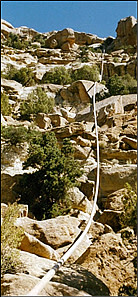nanil
Mechanical
- Nov 15, 2020
- 8
We are planning to do pipeline inline inspection pigging using pneumatic pressure of 20 Bar. Pipeline length is 20",16km, with a total volume of 3060m3. I performed Stored energy and safe distance calculation as per ASME PCC-2 part 5 article 5.1. The value is very high with a safe distance of around 330m. Maintaining this distance is practically not possible. Equivalent TNT value was 2186.2Kg. This is an underground pipeline. Is equations for Stored Energy in ASME PCC-2 applicable for underground pipeline also. Please advise. Is there any other ways to compute this.




